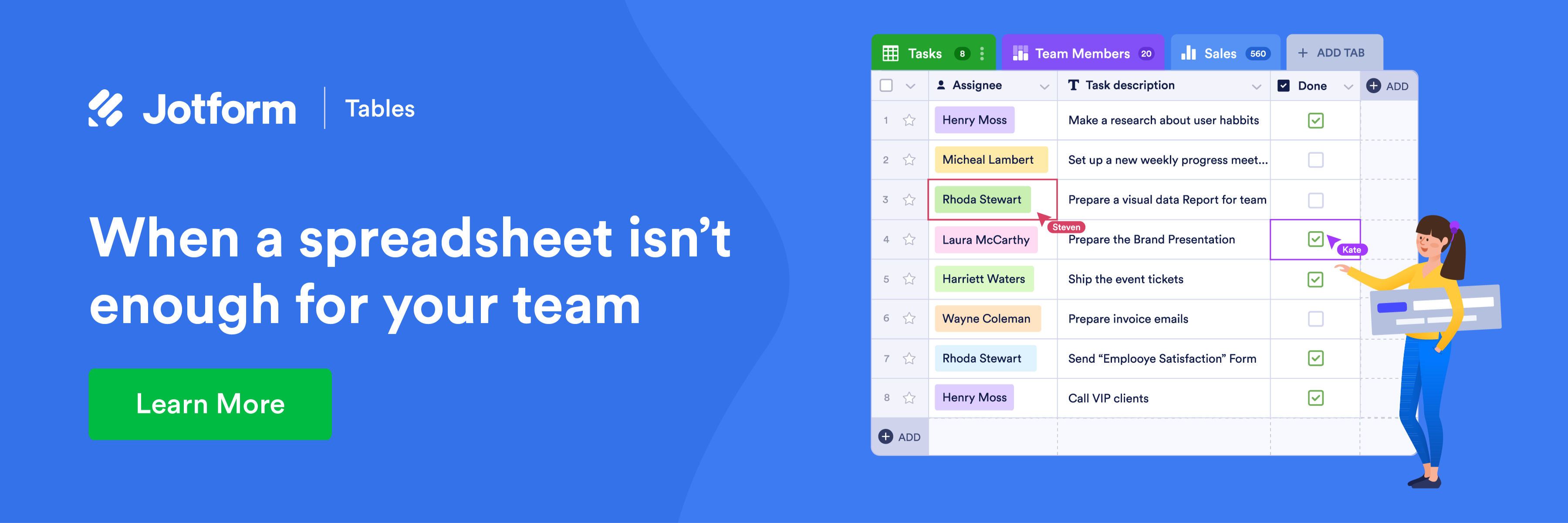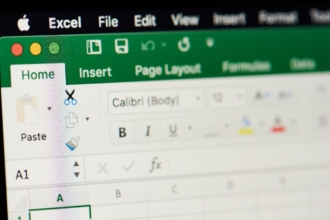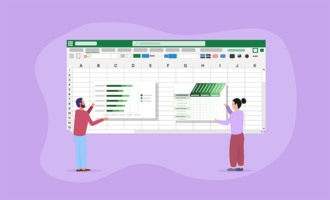11 alternatives to Microsoft Excel
The year was 1987. We met the Simpsons for the first time, Whitney’s Houston’s “I Want to Dance with Somebody” took over the airwaves, and Microsoft officially launched the new Windows operating system. With its vibrant graphics and unprecedented processing power, Excel rapidly overtook the market to become the standard in spreadsheet software.
While Excel is certainly a long-time favorite, not everyone is willing to dish out the $69.99 per year price tag for a Microsoft 365 subscription — especially when the program has yet to adopt seamless collaboration features other software has incorporated.
Whether you’re on the hunt for a free alternative or seeking new tools to improve productivity, these are the top 11 Excel alternatives.
1. Google Sheets
If the name XL2Web doesn’t sound familiar, that’s because Google changed the name when they acquired the web-based spreadsheet software in 2006. Now known as Google Sheets, the software has become one of the top Excel alternatives for a number of reasons, including the fact that it’s free.
Google Sheets originally became popular because it was the first spreadsheet software that allowed users to collaborate in real time. Today, up to 50 team members can all collaborate on one sheet at the same time.
In addition to basic mathematical and logical functions standard for Excel, Google Sheets furthers its collaborative abilities by syncing with Google Workspace apps like Google Analytics and Google Looker Studio.
2. Calc
Like Google Sheets, Calc, the spreadsheet software that’s part of LibreOffice, is a free Excel alternative. You can download LibreOffice to your desktop or laptop and use Calc offline. This software boasts nearly 300 productivity-boosting features, including a DataPilot to aggregate raw data and a Chart Wizard to create basic diagrams and graphs.
If you’re looking for an alternative to Excel that offers the most bells and whistles for free, Calc is a great option.
3. Apple Numbers
Apple Numbers is a free Excel alternative that comes preinstalled on all Apple devices, from iPhones to Macbooks. The convenient app allows for real-time collaboration with other users and offers a few unique visual options that truly set it apart from the pack. For one, unlike traditional software, Numbers loads as a blank sheet that you can populate with multiple tables. Each table can be customized to the exact width and height needed for your data.
Other unique features include the ability to record, edit, and play audio in a spreadsheet, which is perfect for those using Numbers for project management. Plus, all sheets can be exported as a .xlsx file that can be opened by non-Apple users.
4. WPS Office Free
Right on the heels of Microsoft’s Excel came WPS Office, a lightweight, free, and fast office suite that’s highly compatible with Microsoft Office. WPS Office offers three applications, including Writer, Presentation, and Spreadsheets. The Spreadsheets option has a similar interface to Excel, and while it doesn’t process as quickly, it still has a decent amount of features.
You can opt for a free version of the suite, WPS Office Free, or upgrade to WPS Office Pro to eliminate ads and gain more cloud-based storage. The annual Pro plan is $35.99 per year, which is still considerably cheaper than a Microsoft 365 subscription. It’s worth noting that WPS Office offers a free trial for new users, so you can try before you buy.
5. SoftMaker Office
If you’re searching for an affordable and lightweight alternative to Microsoft 365, SoftMaker Office is another option to consider. SoftMaker offers four applications, including TextMaker, PlanMaker, Presentations, and integration with Thunderbird email.
The most practical aspect of SoftMaker, aside from its smaller size, is its preference for using the Microsoft formats .docx, .xlsx, and .pptx as its default file formats to eliminate any compatibility issues.
The pricing starts at $29.90 per year or $2.99 per month. SoftMaker FreeOffice is a free option that’s virtually the same but with some ads.
6. Hancom Office
Hancom Office is a web-based office suite that runs on Windows, macOS, Linux, Android, and iOS platforms. Hancom Office reads and writes in Microsoft file formats like .docx and .xlsx. As far as user experience is concerned, Hancom Office has a similar look and somewhat comparable functionality to Microsoft’s Word, Excel, and PowerPoint, but calls them Word, Cell, and Show, respectively.
Hancom Office’s pricing includes tiered plans, with one free plan that comes with 2 GB of storage. Paid plans start at $5.99 per month, which gives 10 GB of storage, along with additional features.
7. Polaris Office
Polaris Office is another alternative to Microsoft 365. It boasts a small installation package and quick startup speed. Similar to Open365, Polaris Office is fully compatible with Microsoft products but will also load and export PDFs and Google Docs. This is an important consideration for anyone who routinely shares spreadsheets across multiple operating systems, whether web- or PC-based.
Polaris Office offers paid subscription plans starting at $3.99 per month, offering different storage limits and features like AI editing. You can also purchase lifetime licenses for different operating systems. Windows and macOS licenses cost a one-time payment of $119.99.
8. Grist Labs
Go beyond streamlining data by creating an expansive database with Grist. An Excel alternative, Grist, much like Numbers, provides a more customizable view than the traditional table layout. However, with Grist, you can populate reports, create custom dashboards, and attach files to organize your data.
In addition to supporting real-time collaboration on spreadsheets, Grist is a great option for those juggling CRM or business management. Similar to Polaris Office, Grist is free, to an extent. A free plan will grant you an unlimited number of documents per month and up to 5,000 records per document, while a Pro plan at $8 per user per month provides up to 100,000 records per document. A customized enterprise option is also available.
9. Zoho Sheet
With more than 350 functions to date, Zoho Sheet is a cloud-based Excel alternative that’s one of the most comparable in terms of features. While its top ribbon isn’t the sleekest, its functions are laid out simply and clearly, which makes it easy to use for all team members.
Zoho Sheet is ideal if you’ll be sharing data with team members or clients internationally. With the ability to toggle between right-to-left page orientation and in 23 different languages, anyone across the globe can feel at home using the platform.
Zoho Sheet is available for free.
10. Zendesk (formerly known as BIME)
If you’re willing to up your price from your current Microsoft 365 package, Zendesk is the cloud-based alternative for you. Zendesk aggregates raw data and utilizes AI to compute valuable insights and actionable information that you can use to improve sales, reduce spending, and optimize ROI.
Zendesk would be the right fit for anyone seeking comprehensive data analysis as opposed to a sheet that simply stores data. Additionally, it offers Google Analytics, Facebook Insights, and YouTube and X (formerly Twitter) analytics integrations for those tracking return on ad spend. Prices for a base plan for Zendesk begin at $19 per month per agent when billed annually and include pre-built analytics dashboards and reporting features.
11. QuickBase
QuickBase is more than just an Excel alternative — it’s a project management tool that allows you to integrate all of your services and file storage in one place. QuickBase can be hooked up to Quickbooks, Salesforce, and Bill.com, as well as Dropbox, Google Drive, and more.
As a cloud database software platform, QuickBase combines data management and organization to create a custom dashboard for every user. Allocate tasks, track customers, and monitor expenses, all with the click of a button.
A team subscription to QuickBase is $35 per user, per month for a minimum of 20 users. A Business plan and a customized Enterprise option are also available.
Summary
While Excel may have been reigning champ since the ‘80s, a variety of similar software is waiting to take its spot. Give one of these software platforms a try to see if one suits your needs better than Excel.















Send Comment: